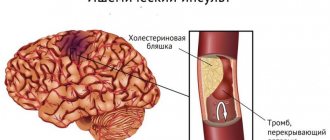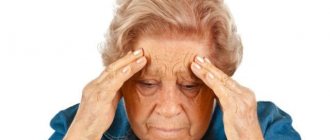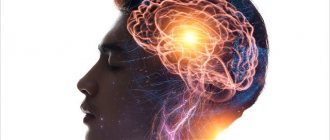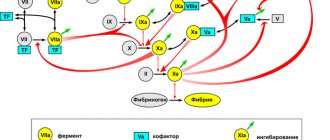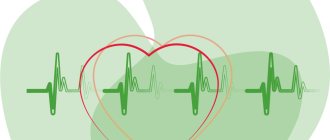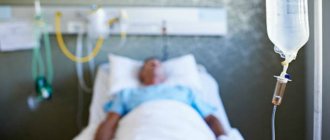Anesthesiologist-resuscitator
Smirnov
Igor Valerievich
18 years of experience
Leading anesthesiologist-resuscitator of the highest category, member of the European Society of Anaesthesiology
Make an appointment
Coma is a life-threatening pathology of consciousness caused by damage to brain tissue. The patient completely loses contact with the outside world. Coma can occur due to metabolic (intoxication with metabolic products or chemicals), organic (deformation of brain areas) reasons.
The key symptom is an unconscious state, the patient’s pupils do not react even to strong stimuli. To diagnose pathology, CT, MRI, and laboratory tests of blood plasma are used. Therapy is aimed at combating the cause of the coma.
Symptoms and signs of coma in adults
As already noted, the main symptoms of coma are the absence of any mental activity of the patient. Other symptoms of coma depend on the cause that caused damage to the brain structures.
- Body temperature indicators. Coma, which is caused by overheating, is accompanied by elevated body temperature (up to 43 degrees) and dry skin. Intoxication with alcoholic beverages and sedatives is associated with hypothermia (temperature up to 34 degrees).
- Inhalation/exhalation frequency. Slow breathing is a sign of a hypothyroid type coma (lack of thyroid hormones). Deep breathing is common in patients with pneumonia, brain cancer, and kidney failure.
- Blood pressure, heartbeat. A decrease in the number of heart contractions indicates that the person has fallen into a coma due to an acute disease of the heart muscle. Arterial hypertension is observed in patients who have become comatose due to a stroke. Low blood pressure indicates a diabetic coma, intoxication with sedatives, or a heart attack.
- Color of the skin. The skin turns cherry color if a person is poisoned by carbon monoxide. Blue ends of the fingers indicate a reduced concentration of oxygen in the blood plasma. Pale skin is typical for patients who have lost a lot of blood.
- Contact with the environment. With a mild coma, the patient can make different sounds, which suggests a favorable prognosis. As the coma worsens, the ability to make sounds disappears.
Are you experiencing coma symptoms?
Only a doctor can accurately diagnose the disease. Don't delay your consultation - call
Prognosis after ischemic, hemorrhagic
Cerebral hemorrhage usually occurs in a more severe form. The mortality rate in such patients reaches 70%; even after removal of the hematoma, the rate is not much lower. Unfavorable factors include:
- breakthrough of blood into the ventricles of the brain;
- uncontrolled arterial hypertension;
- large volume of hematoma;
- progressive cerebral edema;
- signs of displacement of the stem part;
- acute heart failure;
- increase in creatinine content in the blood;
- convulsive syndrome, lack of consciousness, reactions to painful stimuli for more than 3 days;
- age after 70 years.
With ischemic stroke, a more benign course is observed; it is rarely accompanied by a profound impairment of consciousness. This happens with repeated vascular accidents, massive blockage of the brain arteries with cholesterol plaques, lack of treatment or complete disregard of doctors’ recommendations.
Blockage of arteries in the brain
Precoma and the first degree of coma can still give the patient a chance for recovery; with a higher degree, the prognosis is considered doubtful, and the onset of extreme coma is usually regarded as fatal.
Causes
Why do they fall into a coma? The main causes of this condition in adults:
- organic factors (stroke, gunshot wound, bruise, bleeding into the brain);
- internal chemical compounds. They are metabolic products that appear due to organ diseases;
- external chemical compounds. Poisoning of the central nervous system can occur due to an overdose of drugs, sedatives, or neurotropics.
The reasons listed above explain how people fall into a coma. Particularly worth highlighting is a factor that combines signs of organic and chemical causes. This is an increase in pressure inside the skull. A similar pathology is observed with head injuries and neoplasms in the nervous system.
Introduction to an artificial coma after a stroke
Sometimes it is necessary to switch off a person's consciousness with medication to prevent life-threatening brain changes.
In the event of compression pressure on brain tissue, swelling, or hemorrhages and bleeding resulting from traumatic brain injuries, the patient is placed in an artificial coma, which can replace anesthesia during times of crisis.
Long-term analgesia allows you to constrict blood vessels, reduce the tension of cerebral flow, and avoid necrosis of brain tissue.
Sedation is caused by the administration of a controlled high dose of special drugs that have a depressant effect on the central nervous system in intensive care conditions.
This condition can last a long time and requires constant monitoring of the patient's condition. Any reactions to external stimuli or movements indicate the possibility of returning consciousness.
The task of the medical staff is to provide assistance in recovering from a coma.
Introduction to sedation has side effects, including complications of the respiratory system (tracheobronchitis, pneumonia, pneumothorex), hemodynamic disorders, renal failure, and neurological pathologies.
When to see a doctor
If a person falls into a coma, you should immediately consult a doctor. There can be no exceptions here. First of all, the patient will need the help of a resuscitator who will try to quickly remove the patient from the pathological condition. If resuscitation measures have no effect, treatment of the patient must be started.
Which specialist will treat the patient depends on the cause that caused the disturbance in the state of consciousness. You can seek qualified medical help at our clinic. We have specialists who understand how to work with people who have fallen into a coma. The choice of a doctor who will treat coma in the Central Administrative District depends on the cause that led to the development of the pathology.
Rehabilitation after a coma
To bring a patient out of a coma, doctors make many attempts, and this process takes an indefinite amount of time. If persistent efforts are successful, the person’s consciousness returns, the mood for recovery is formed, and rehabilitation is carried out under the supervision of specialists.
For this purpose, targeted centers with multifaceted rehabilitation programs are created. In the Minsk region, one operates in the Aksakov region. Those who require specialized assistance are there free of charge.
Diagnosis of coma in adults
To diagnose coma 1, 2, 3 degrees in the center of Moscow, the following methods are used.
CT. One of the most informative methods of radiation diagnostics. The advantages of this procedure include the following:
- fast scanning;
- it is possible to obtain thinly sliced images (up to 0.1 cm) without increasing the radiation dose to the patient;
- increased resolution, which allows you to obtain clear images of internal organs.
MRI. A modern diagnostic method through which the doctor can obtain images of sections of soft tissues and organs in different planes.
Blood analysis. Performed to determine the concentration of hormones in the blood plasma.
Degrees of condition
How long a coma will last after a stroke depends on the initial condition of the patient, but this time is usually 2-10 days. Less often, the patient is in a state of sleep for less than 24 hours. A person is rarely unconscious for several years or months after a blow.
- Why does coma occur during a stroke and are there any chances?
It is impossible to determine exactly at the moment sleep begins how many people will remain in it.
But there is one important pattern: the longer a person is in this state, the lower the risks of surviving and returning to normal life. The duration of sleep also affects the ease of recovery after being in a coma. In 70-90% of clinical cases, a person remains with 1-3 degrees of disability, and important body functions are lost. There are 4 degrees of coma after a stroke:
- Pre-coma . The person is in normal consciousness, his muscles are working, but lethargy and loss of tone are noticeable. Partial numbness of the skin occurs. At this stage, the transition to unconsciousness can be prevented
- Second degree . At this moment, the person falls into a deep unconscious sleep and stops responding to any stimuli. Breathing gradually changes: it becomes noisier and more intermittent, and the muscles begin to contract involuntarily.
- Third degree . It is formed mainly during a major stroke. The person completely loses consciousness, physiological reactions, including muscle cramps, go away. The temperature is decreasing.
- Fourth degree . In this case, the chances of surviving a coma caused by a stroke are almost zero. Even spontaneous breathing, which remains a reflex, is absent. The person is connected to special devices.
In unconscious sleep, a person needs special care from medical personnel: he is fed, served, and kept alive in accessible ways.
Myths and dangerous misconceptions in the treatment of coma in adults
Based on Hollywood films, people might have the idea that a first-degree coma is a kind of vacation, a break from the outside world. In the movies, the patient after a coma looks fresh and rested. However, in reality this is not the case. Many patients never fully recover after emerging from a comatose state. It is not uncommon for a person to remain disabled and bedridden for the rest of his life. For this reason, the family of a person who has fallen into a coma needs to prepare for long-term care for their loved one and provide him with moral support.
Question and answer
Does it happen that a patient comes to his senses after he has been declared brain dead?
Such cases do happen. For example, on December 23, 2011, doctors definitely and objectively confirmed the brain death of 21-year-old American student Sam Schmidt, who fell into a deep coma after an accident. Sam's parents were advised to think about consenting to the removal of their son's organs for transplantation, and an hour later a consultation was to be held on the issue of turning off the equipment that supports life in his body. Suddenly Sam moved his fingers, began to respond to calls and woke up.
How to get to the rehabilitation center in Aksakovshchina?
From the metro station "Pushkinskaya", "Kamennaya Gorka" by minibus 1203 TK, from the railway station, metro station "Kamennaya Gorka" - by minibus 1500 TK.
Do the Belarusian media publish information about those who came out of a coma, about what they felt?
The most recent publication with such interviews was on the TUT.BY website in the “Health” section on May 20, 2021.
Prevention
Preventive measures are aimed at prompt treatment of diseases that can lead to a coma. If a person has suffered a stroke, he needs to periodically visit a doctor so that he monitors the condition of the patient’s body and can detect signs of coma in time.
You also need to stop drinking alcohol and drugs. People suffering from alcoholism and drug addiction are at risk. They are unable to control the amount of ethyl alcohol and drugs they take, so they risk getting an overdose and falling into a coma.
It is extremely important to monitor your health. You cannot ignore the recommendations of doctors and other specialists. A proper daily routine, sleep and eating patterns, giving up bad habits are just the minimum of what every person should remember.
If there are any contraindications to playing serious sports, then all of them should be abandoned. Physical activity is allowed, but it is important to maintain its degree. In some cases, only light exercises in gymnastics, fitness and any other sport where the load is minimal are allowed.
Any deviation from the general rules (especially for those people who are at risk) can lead to undesirable consequences. It is important not only to remember this, but also to follow all recommendations.
If you have any questions or do not know whether excessive loads are allowed for you, it is better to seek advice from relevant specialists. If necessary, they will carry out a series of diagnostic measures and, based on the results obtained, will give you a conclusion.
Prevention is the best measure in the fight against any pathology, regardless of its type and severity. And the health of each person is in his own hands. Doctors and other specialists can only guide you along the right path.
Main consequences of the condition
There are several outcomes that can result from coma after a stroke. Firstly, the patient will return from a dangerous condition with (in rare cases, complete) restoration of vital functions. Secondly, death as a result of brain death, which can occur due to severe hypoxia.
Thirdly, a way out of the situation without restoration of functions, with preservation of paralysis and paresis, as well as with impaired memory and intelligence. Fourthly, the transition to a vegetative state with the preservation of limited reactions to stimuli, while the person cannot speak or think.
Proven fact: full restoration of health is possible only in 10% of cases.
How to call a resuscitator
If you decide to go to our clinic in the center of Moscow for medical help, dial the ambulance number -. A team of our specialists will arrive at the address you specified to transport the patient to a medical facility and provide him with first aid.
All our specialists are highly qualified and have extensive medical experience. All diagnostic measures are carried out promptly. This is also due to the availability of modern equipment. Our doctors choose the most optimal treatment method, taking into account the characteristics of the disease and the patient’s body.
Our clinic is located at the address: Moscow, Central Administrative District, 2nd Tverskoy-Yamskaya Lane, building 10. The nearest metro station is Mayakovskaya (5 min walk).
Remember that if a person falls into a coma, he requires emergency assistance from specialists. The slightest delay can lead to the death of the patient.
Hemorrhagic cerebral stroke
This type of stroke is characterized by extensive bleeding in the brain. Bleeding can begin after damage to the vessel (due to external mechanical trauma), due to rupture of an aneurysm, or damage by a blood clot. In addition, there are often cases when there is a congenital pathology in which the permeability of the vessel is increased. Naturally, with this type of stroke, the prognosis is greatly worsened, since the consequences are very serious, and the rehabilitation period increases. It is also worth noting that with a hemorrhagic stroke, coma is very severe.
With any type of stroke, coma can develop, but with hemorrhagic stroke it appears most often, it develops faster and has a number of complications and aggravating factors.
Treatment
Treatment begins with stabilizing the respiratory rate (respiratory rate), and it is also very important to restore all functions of the cardiovascular system. The development of a treatment plan should begin only after all necessary research has been completed. It is very important to quickly replace all vital functions with artificial ones. For example, supplying oxygen to the body, stabilizing body temperature, and providing nutrition are very important.
Hemorrhagic stroke is treated only with surgery. With this operation, bleeding in the brain is eliminated and the aneurysm, which was the causative agent of the bleeding, is clogged. After all these manipulations, the swelling begins to rapidly subside. Such an operation requires a highly qualified neurosurgeon.
Coma: symptoms, types, diagnosis
Coma is a complete suppression of consciousness with loss of pain sensitivity and reflexes, with general muscle relaxation and dysfunction of vital organs and systems of the body.
Classification of degrees of impairment of consciousness (Bogolepov, 1982).
- Clear consciousness
- Darkened consciousness
- Stupor
- Sopor
- Coma: moderate, deep, extreme
Symptoms of impaired consciousness
| Degree Impaired consciousness | Leading signs | General signs |
| Clear consciousness | Cheerfulness, complete orientation in time and space and in one’s face. | Active attention, absolute language contact, thoughtful answers to questions, following all instructions. Free opening of eyes. |
| Darkened consciousness | Moderate drowsiness or euphoria, partial disorientation in time and space with complete orientation to one’s face. | The ability for active attention is reduced. Language contact is maintained, but obtaining an answer sometimes requires repeating questions. Commands are executed correctly, but somewhat slowly, especially complex ones. |
| Stupor | Deep drowsiness, disorientation in time and space, upon awakening, follows only simple commands. | The state of sleep predominates, sometimes in combination with motor excitement. Language contact is difficult. Unambiguous answers. The defensive reaction to pain is preserved. Control over the function of the pelvic organs is weakened. |
| Sopor | Pathological drowsiness, complete disorientation in time, space and in one’s face. | Opens eyes to painful stimuli, localizes pain with targeted actions to eliminate it. Reflexes of the cranial nerves and vital functions were preserved. |
| Coma moderate | There is no consciousness. | There is no reaction to external stimuli. Responds to painful stimuli with uncoordinated defensive movements. Pupillary and corneal reflexes are increased, abdominal reflexes are decreased. Reflexes of oral automatism and pathological reflexes from the feet appear. Sphincter control is impaired. Vital functions are preserved. |
| Coma deep | There is no consciousness. | The reaction to pronounced painful stimuli in the form of extension of the limbs is preserved. Suppression or absence of skin, tendon, corneal, pupillary reflexes. Rigidity or hypotonia of striated muscles. Respiratory and cardiovascular disorders. |
| Coma beyond measure | There is no consciousness. | Areflexia, bilateral fixed mydriasis, muscle atony, significant disturbances in breathing and cardiovascular activity. Hypotension (blood pressure below 60 mmHg) |
Etiopathogenetic classification of comas
1. Comas of central origin (epileptic, traumatic, apoplexy).
2. Coma due to dysfunction of internal organs and endocrine glands (diabetic, hypoglycemic, thyrotoxic, myxedema, hypopituitary, hypocorticoid, hepatic, uremic, chlorpenic, anemic, alimentary-dystrophic).
3. Comas of infectious origin (pneumonia, malaria, neuroinfectious, etc.).
4. Comas due to acute poisoning (alcohol and its substitutes, medications, carbon monoxide, etc.).
5. Comas that occur under the influence of physical factors (heat, cold, radiation, electric current).
Diagnosing the cause of coma can sometimes be quite difficult, since it is impossible to collect an anamnesis from the patient. Therefore, it is very important to ask the victim’s relatives and witnesses how this coma arose.
History . It is necessary to find out the time of loss of consciousness, sudden or gradual deterioration of the condition, ask whether the patient did not fall or hit his head; or did not have a high fever, flu or jaundice. It is necessary to establish whether the victim did not have diabetes, hypertension, or epilepsy; Has he had similar cases of loss of consciousness or suicide attempts in the past? If the coma developed gradually, then what the patient complained about, whether he was vomiting, will be judged.
When examining the victim’s belongings, you can sometimes find medical documents, medicine packages, and remains of poisons. These findings may help in making a diagnosis.
In the absence of anamnestic data, it is important to identify individual symptoms on the basis of which the disease can be recognized.
Color of the skin. Severe pallor is characteristic of massive blood loss, circulatory collapse, uremic coma, and blood diseases. Severe cyanosis is a sign of hypercapnic coma with insufficient external respiration function, asphyxia during hanging, drowning; after suffering an attack of convulsions. Facial hyperemia suggests poisoning with atropine and its derivatives, carbon monoxide, hyperglycemic coma and an infectious disease.
Head position . A head thrown back indicates meningitis, tetanus, hysteria; leaning to one side - most likely about a stroke. Hoarse breathing and a distorted mouth are characteristic of a stroke. Pathological types of breathing (Cheyne-Stokes, Biota) are observed with deep damage to the central nervous system. Deep noisy breathing (Kussmaul) indicates the accumulation of acids in the body (metabolic acidosis) of exogenous (in acute poisoning) or endogenous (diabetic ketoacidosis) origin. Hyperthermia and frequent deep breathing are characteristic signs of a coma of infectious origin. With this pathology, an increase in body temperature by 1 0C is accompanied by an increase in respiratory rate by 5-7 per minute.
In order to examine a patient in a coma, a medical professional must approach him from the back of the head. This position is dictated by the following points: firstly, the ability to immediately provide assistance to the victim if necessary (remove the lower jaw, free the tongue from biting, clear the oral cavity of vomit, perform artificial ventilation), and, secondly, the personal safety of the resuscitator, since an unconscious victim can injure him by pushing him with his hand or foot.
Simulation, and sometimes coma of hysterical origin, can be detected when trying to open the patient’s eyes. A person with completely absent consciousness does not strain his eyelids when opening them with his fingers. Conversely, even barely perceptible resistance when trying to raise them is a sign of preserved consciousness.
By pressing on the eyeballs, you can determine their tone. “Soft” eyeballs indicate hypovolemia (blood loss, hypohydration). They occur in patients with hyperglycemic coma and shock.
The depth of coma is diagnosed by the degree of suppression of reflexes. Thus, a reaction to eyelash irritation indicates a superficial coma. The reaction to irritation of the sclera is preserved - moderate coma. Lack of pupillary response to light is a sign of deep coma.
The pupils can be of different sizes: constricted - in case of poisoning with sleeping pills, organophosphorus substances; very narrowed (like a poppy seed) - in case of drug poisoning; extended - for hypoxia, poisoning with antipsychotics and antihistamines; very expanded - when consuming atropine-containing substances.
Anisocoria (pupils of different sizes) is a characteristic sign of focal damage to the central nervous system. Most often, this symptom occurs with traumatic brain injury with the presence of an intracranial hematoma. In such patients, a detailed examination of the face and scalp can reveal abrasions, a wound or subcutaneous hemorrhage. Sometimes there is a deviation of the eyeballs to the right or left - in the direction of brain damage.
The absence of knee, Achilles and abdominal wall reflexes indicates deep depression of the central nervous system. The pathological Babinski reflex indicates organic brain damage. Asymmetry of muscle tone is a sign of a space-occupying process in the cranial cavity (stroke, tumor, hemorrhage).
A detailed examination of other organs and systems helps in establishing a diagnosis. Thus, central nervous system failure may be caused by interruptions in the functioning of the heart due to disturbances in its conduction (Morgagni-Edams-Stokes syndrome). In turn, focal brain lesions cause disturbances in the functioning of the cardiovascular system.
Hemodynamic disorders depending on the location of the pathology in the central nervous system
| Localization of pathology in the brain | Manifestations of damage to the cardiovascular system |
| Lesions of the fronto-orbital zones | Bradycardia, complete atrioventricular block, atrial extrasystole |
| Excitation of midbrain structures | Extrasystole, atrioventricular block, ventricular fibrillation |
| Pathology of the medulla oblongata | Nodal and ventricular extrasystoles, atrial fibrillation |
| Damage to the hypothalamic region | Extrasystole, paroxysmal tachycardia, severe hypotension. |
| Lesions of the vascular-motor center | A sharp drop in vascular tone, hypotension, bradycardia, cardiac arrest. |
Listening to a friction rub of the pericardium and pleura may indicate a uremic nature of the coma. Enlargement or reduction of the liver is characteristic of hepatic coma. An enlarged spleen is a sign of an infectious pathology, liver or blood disease.
In a hospital, the cause of coma can be diagnosed by laboratory tests of blood and cerebrospinal fluid. If a cerebral coma is suspected, the patient is given:
- x-ray of the skull,
- angiography,
- echoencephalography or computed tomography
To diagnose the degree of depth of coma, the international classification (scale) of Glasgow (1974) is used:
| Symptoms | Points |
| Opening your eyes | |
| Spontaneous opening of eyes | 4 |
| Opening your eyes to sound | 3 |
| Opening your eyes to painful stimuli | 2 |
| Lack of opening eyes to any stimuli | 1 |
| Movement disorders | |
| Active movements performed as directed | 6 |
| Movements in the limbs directed to the site of painful irritation in order to eliminate it | 5 |
| Normal flexion movements | 4 |
| Pathological flexion | 3 |
| Only extension movements are preserved | 2 |
| All kinds of movements and reactions are absent | 1 |
| Speech reactions | |
| Free conversation | 5 |
| Pronunciation of individual phrases | 4 |
| Pronunciation of individual phrases in response to painful stimuli | 3 |
| Unintelligible sounds in response to irritation or spontaneously | 2 |
| Lack of speech in response to irritation | 1 |
Scoring allows you to determine the degree of depression of consciousness:
| Moderate muting | 13-14 points |
| Deep Muting | 11-12 points |
| Sopor | 8-10 points |
| Moderate coma | 6-7 points |
| Deep coma | 4-5 points |
| Terminal coma | 3 points |
Anatomical and functional features of the central nervous system
Being the central regulator of all processes occurring in the body, the brain operates in an active metabolic mode. Its weight is only 2% of body weight (about 1500 g). However, for the uninterrupted functioning of the brain, 14-15% of the total volume of circulating blood (700-800 ml) must flow into and out of the cranial cavity every minute. The brain uses 20% of all the oxygen the body consumes. It is metabolized only by glucose (75 mg per minute or 100 g per day).
So, the physiological functioning of brain tissue depends on adequate perfusion with its blood, the content of a sufficient amount of oxygen and glucose, the absence of toxic metabolites and the free outflow of blood from the cranial cavity.
A powerful autoregulation system ensures smooth functioning of the brain. Thus, even with significant blood loss, the perfusion of the central nervous system is not impaired. In these cases, a compensatory reaction of centralization of blood circulation with ischemia of less important organs and tissues is activated, aimed primarily at maintaining adequate blood supply to the brain. The body reacts to another pathological condition - hypoglycemia - by increasing blood flow to the brain and increasing the transport of glucose here. Hyperventilation (hypocapnia) reduces blood flow to the brain; hypoventilation (hypercapnia) and metabolic acidosis, on the contrary, increase blood flow, promoting the removal of “acidic” substances from tissues.
With significant damage to brain tissue, insufficient autoregulation or excessive manifestations of the compensatory reaction of the inflow and outflow of blood, the brain cannot voluntarily change its volume. The closed cavity of the skull becomes its trap. Thus, an increase in intracranial volume by only 5% (with hematomas, tumors, hyperhydration, liquor hypertension, etc.) disrupts the activity of the central nervous system with the patient losing consciousness. In another pathology, excessive growth of cerebral blood flow leads to overproduction of cerebrospinal fluid. The brain tissue is compressed between the blood and the cerebrospinal fluid, swelling develops, and functions are impaired.
Traumatic destruction of brain tissue, edema and swelling, increased intracranial pressure, impaired circulation of cerebrospinal fluid, circulatory disorders and other damaging mechanisms lead to hypoxia of CNS cells. It manifests itself primarily as a disturbance of consciousness.


